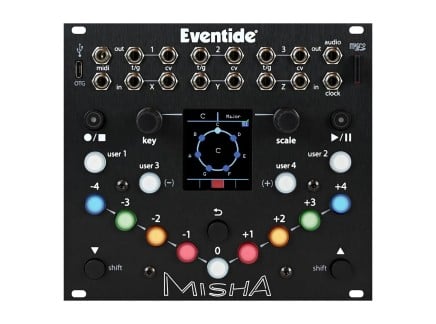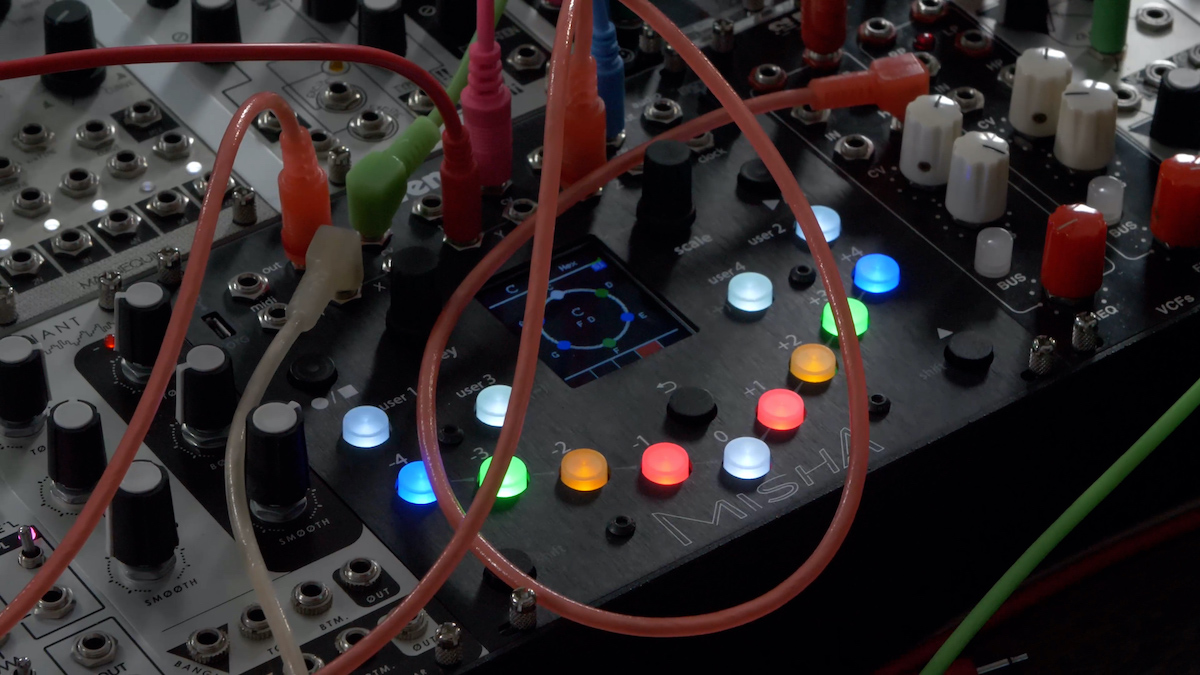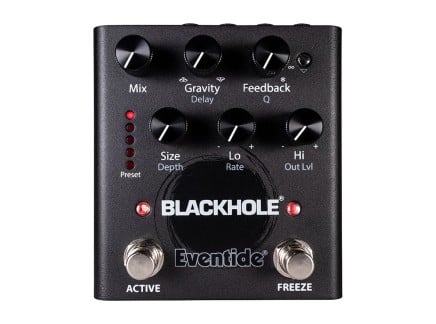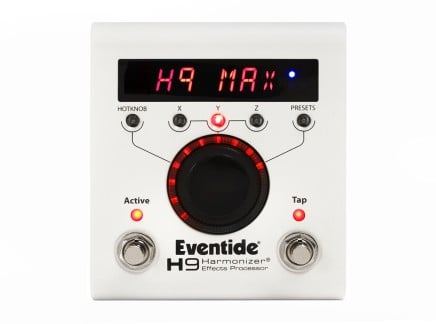Given Eventide's more than half a century of innovation in the audio industry, any new release from the brand is worth a close look. If you are interested to learn more about their history, we have a couple of articles outlining it here and here, but today we are directing our full focus towards the company's latest contribution to the land of Eurorack—Misha.
Misha isn't Eventide's first foray into the world of modular synthesizers: it was preceded by the EuroDDL digital delay, which took inspiration from the brand's early 1745 Digital Delay Line processor. Of course, it wasn't too much of a surprise to see Eventide jump into the world of Eurorack with a top-notch effect processor…but Misha departs from this lineage, and can be considered a rather surprising and bold deviation from what the company has been historically associated with.
Because of the continuous streak of success of various incarnations of the Harmonizer-series multi-effects like the H3000, Orville, H9, and the present flagship H9000, Eventide's name became nearly synonymous with powerful and great-sounding DSP hardware and software. Misha, on the other hand, is a totally different animal. In the most general sense, the module presents a novel approach to composing and performing music unlike anything else. In a deeper sense, it may be just the kind of tool for making music that many musicians have fantasized about. So all that said, what is Misha? Let's explore.
What Is Misha?
Misha is a controller, sequencer, and instrument that employs an unusual interval-based performance interface in place of a traditional fixed pitch interface (like a keyboard). It is based on the off-the-wall MIDI controller called the Samchillian Tip Tip Tip Cheeepeeeee which was developed by performer/composer Leon Gruenbaum. He refers to it as "the world's first relativistic keyboard". And while Misha is something of an unexpected release from a public perspective, it has been in development for several years. Quite clearly, everyone involved put a lot of thought into the module. So how does it work?
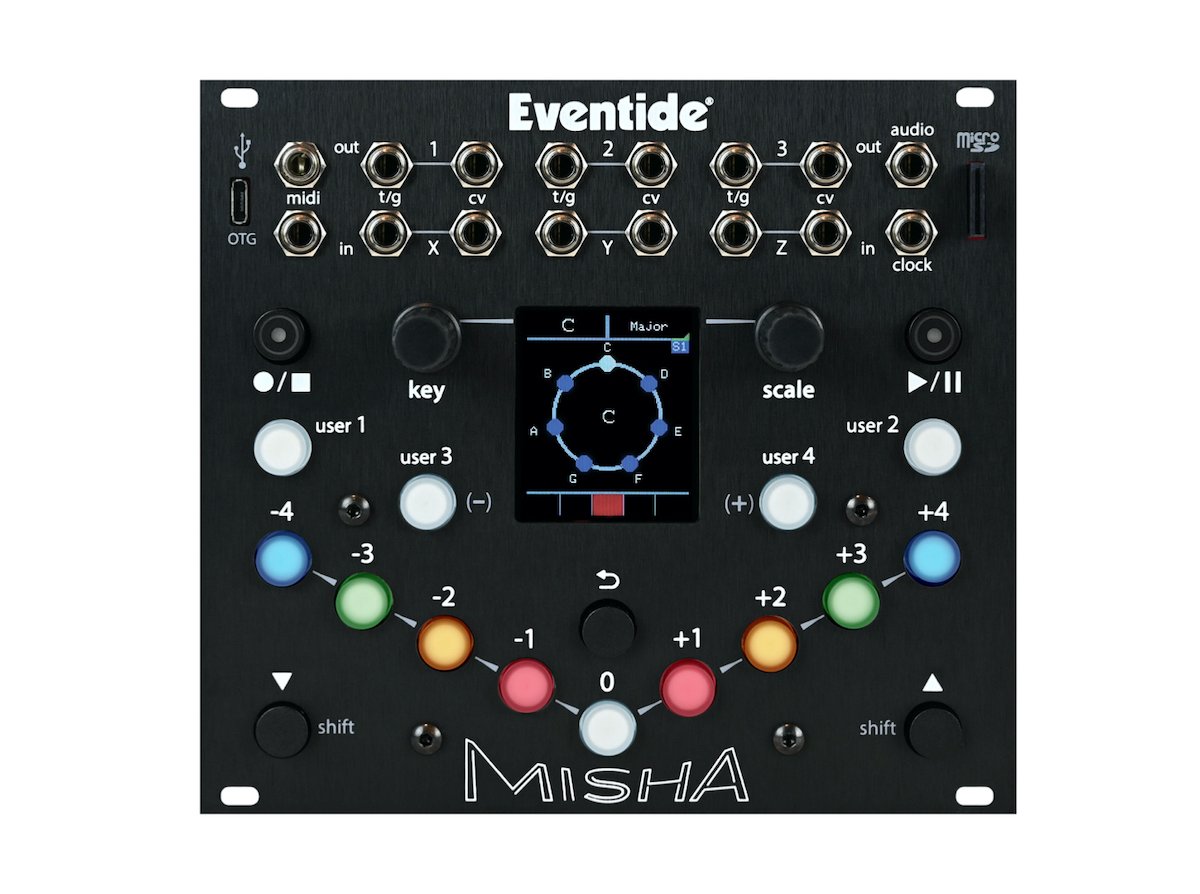
At the epicenter of Misha are nine buttons, positioned in an ergonomic "smile" shape to accommodate two-handed playing. Unlike most controllers, the buttons don't correspond to specific pitches, but to intervallic distances between the notes in the currently selected scale. Pressing the button labeled 0 repeatedly will produce the same note every time. On the other hand, hitting the +1 button will increment the note with each press by one step in the scale. By the same logic, pressing +2 will increment the note by two steps within the scale, and -3 will decrement by three steps, and so on.
As such, Misha offers a radically different approach to playing melodies (and chords, but more on that later). It may feel weird in the beginning, and it definitely requires a bit of getting used to, but in return it allows you to play things with minimal gestures that would be extremely difficult on a regular keyboard.
Aside from the main performance buttons, Misha contains a set of additional controls for playing, navigating, and reconfiguring the device. There are four user-assignable buttons, which are set by default to increment and decrement notes chromatically by semitones, and by octaves. This can be very useful for easily adding passing tones, embellishing melodies, or accentuating harmonies with notes outside of the selected scale. All four "soft" buttons can be reassigned to perform a variety of other functions, from adding a random or a specific interval, or momentarily muting performance buttons.
Two Shift buttons located at the leftmost and rightmost bottom of the module are used to navigate between menu screens, and perform other functions such as saving and recalling presets. There are also two push encoders labeled Key and Scale that allow you to quickly select the right musical key and scale, respectively, as well as perform certain alternate functions when pressed. Lastly, there are Record/Stop, Play/Pause, and the Undo buttons for interacting with the sequencer—which we'll discuss a bit more later.
Misha is fully equipped for connecting with a variety of other gear, not strictly bound to Eurorack format. The module sports three pairs of CV/Gate inputs and outputs, MIDI I/O, and a Clock input for playing in sync with external sources. Moreover, Misha can act as a complete instrument all on its own thanks to its built-in oscillator, accessible via the audio out jack.
To aid users in navigation through the module's abundant features, Misha features a decently sized, yet non-distracting LCD screen that dynamically displays important information such as key and scale indicators, an octave display, and a handy solfege wheel—showing you exactly what notes you're playing.
Totally Serial
Misha primarily has two modes of operation: freeform playing, and sequenced playback. While we have already briefly touched upon the inspiration for the former being the quirky Samchilian controller, the sequencing is heavily inspired by the compositional method known as Serialism, and specifically the twelve-tone or dodecaphonic technique pioneered by Arnold Schoenberg. In general, serialism implies a way of composing music through manipulating and restructuring an ordered series of various musical elements such as pitch, dynamics, and articulation. The twelve-tone method deals specifically with pitches. Let's see how this approach is implemented in Misha.
 A serial Matrix, containing all possible permutations of a single tone row
A serial Matrix, containing all possible permutations of a single tone row
The concept of a "Tone Row" is central to composing and performing with Misha. In serial music, a tone row is an ordered series of notes constructed out of twelve tones of the chromatic scale. Each note within the row is used only once without repeating. This is useful for de-emphasizing a particular pitch, and therefore avoiding pitch centricity in composition. Historically, it was seen as a way to transcend the limitations of tonal music, however, depending on how one approaches constructing a tone row, the technique can produce both tonal and atonal results. In Misha, a tone row is constructed very intuitively. Simply hit Record, and start pressing the interval buttons in the desired order. Once you reach the maximum amount of steps, the sequence starts to autoplay.
Misha also expands on the dodecaphonic approach, allowing you to construct a tone row not only using the notes of the Western chromatic scale, but out of any scale—including various microtonal and region-specific scales, as long as they are equal tempered. Out of the box, Misha's microSD card comes preloaded with a hundred scales, and there are two user banks that you can use to upload your own custom scales in the popular Scala format.
Constructing a tone row is only the beginning: the real fun begins once you start manipulating it through various operations accessible in the Auto Play Menu. Certain play modes like Prime, Retrograde, Random, and Pendulum will be familiar to you if you have used a sequencer or two in the past, but a few others are quite unusual, yet greatly useful. When Transpose Up, and Transpose Down are selected, the sequence will move by specified chromatic interval up or down with each passing. Translate Up, and Translate Down are similar, although the note shifts are constrained to a selected scale.
It is also important to mention, that the tone row mode does not have to be used exclusively for sequencing. If you press the Pause button while the module is in auto-play mode, the interval buttons now correspond to the specific notes within the tone row, and you can play and improvise with them freely. Nice.
Totally Interactive
An abundance of options for interfacing with both Eurorack, and non-Eurorack gear is certainly one of Misha's many strengths, and there are numerous ways this can be done. First of all, the module's analog control voltage, and trigger/gate inputs and outputs allow you to quickly set up patches that can range from very deterministic to fully generative. The latter can be easily managed through creatively assigning external modulation signals to parameters such as Pitch Bend, Translate, Transpose, MIDI Velocity, and other functions.
MIDI Input allows you to control the module via an external MIDI controller or keyboard. Moreover, the keyboard can be split into two sections, where one half behaves equivalently to the interval buttons on the module itself, and the other can be played just like a normal keyboard.
Totally Polyphonic
Misha excels at monophonic improvisations. If you have seen Leon Gruenbaum shredding on Samchillian, you can easily understand why this is the case. You can soar through extensive arpeggios spread across several octaves using only three fingers. And even more importantly, the fingering pattern will remain the same regardless of the selected key. This being said, Misha is not strictly a monophonic instrument.
Misha allows you to compose and perform chord progressions, where each chord consists of up to three notes. The module can output polyphonic sequences from its CV/Gate and MIDI outputs simultaneously, which can be very handy if you want to layer or alternate between two different synth sounds. Rather marvelously, Misha allows you to play or sequence chords the same way you would approach a monophonic sequence, where each interval button triggers the entire triad, keeping the relational quality of chords within the specified scale. This makes it unfathomably easy to play harmonic progressions of varying complexity.
So, Who Is Misha For?
As you have probably concluded yourself by this point of the article, Misha is a quite peculiar controller/sequencer. By its very design, the module combines a rather strict set of rules with a workflow that rewards improvisation and free exploration. Therefore it will find a particular appeal in those who love to approach the process of making music with a sense of wonder—being totally okay with their music being influenced, and inspired by the machine itself.
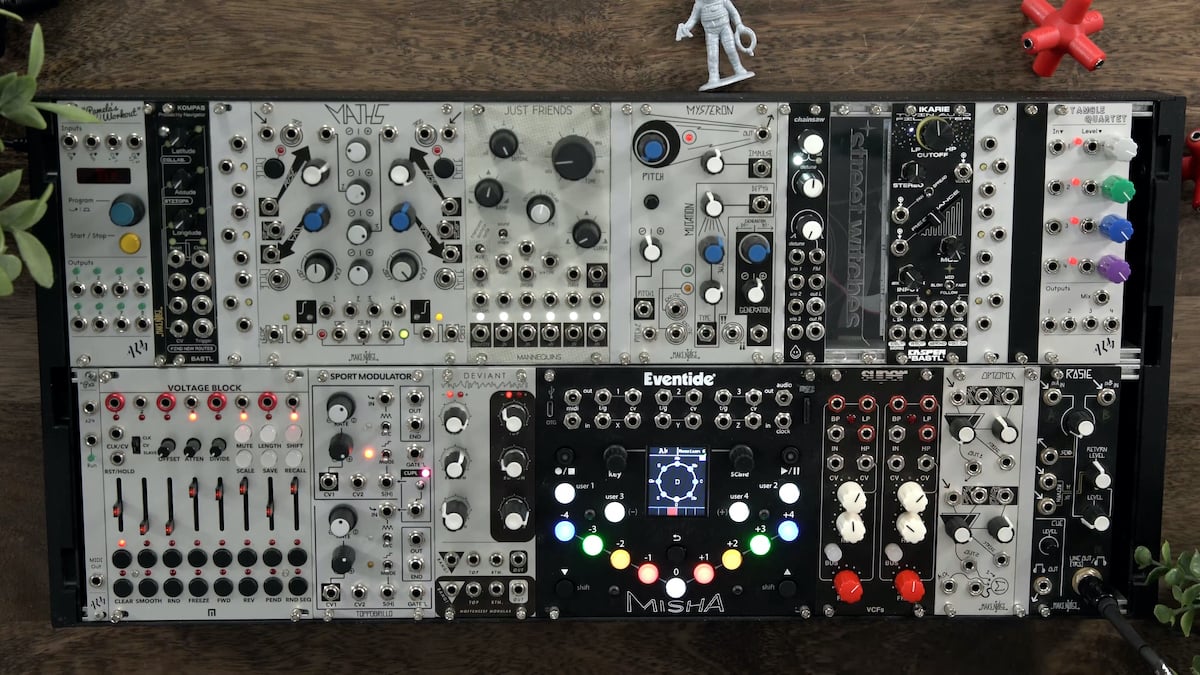
Eventide's Steve De Furia imaginatively refers to performing with the module as "scale surfing". It lets you free your mind from thinking about which note to play, but rather focus on other things like which direction would you like the melody or harmony to move, how sparse or dense should it be, and how fast or slow should it play. And while this approach removes a certain degree of control, it rewards you with something much more important—a seemingly endless supply of inspiration.
Moreover, while Misha's workflow may initially seem strange, or even a bit foreign to musicians accustomed to performing with traditional keyboard instruments. But it is exactly the bold decoupling from an interface bearing the weight of history that makes Misha a great and rather inviting instrument, especially for those who don't feel a particular attachment to the black and white keys. And the instrument's inventive logic which translates simple gestural input into musically complex output is ought to resonate with many musicians of varied backgrounds and proficiency levels.
Without a doubt, Misha requires some practice and understanding from the player, but Eventide did a fantastic job making the initial jump as seamless as possible. If you are willing to invest a bit of time into understanding this remarkable instrument, you will certainly discover something very special.

